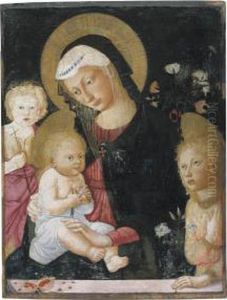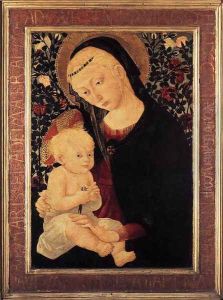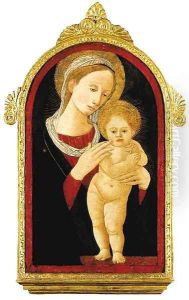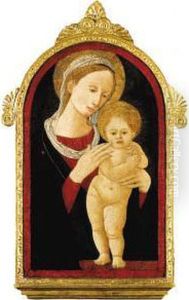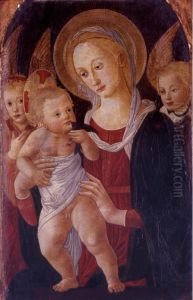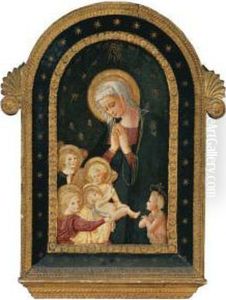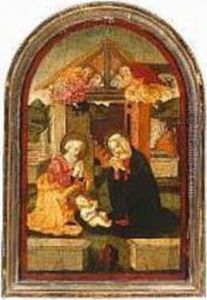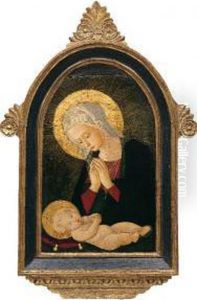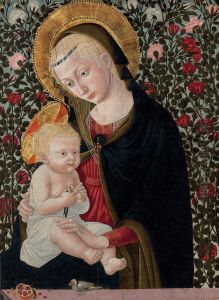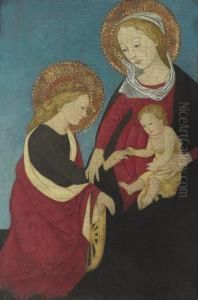Pier Francesco Fiorentino Pseudo Paintings
Pier Francesco Fiorentino, also known as Pseudo Pier Francesco Fiorentino, was an Italian painter of the Renaissance period, active primarily in Florence and its surrounding areas. His nickname 'Pseudo' distinguishes him from the other Florentine artists with similar names at the time and also indicates some uncertainty regarding his true identity and the attribution of his works. His exact birth and death dates are not known, but he is thought to have been born around 1444-1445 and to have died around 1497.
Pier Francesco Fiorentino's work is characterized by its delicate execution and often religious subject matter, following the tradition of the early Renaissance in Florence with influences from Fra Angelico and the school of Filippo Lippi. His paintings frequently feature serene figures set against detailed landscapes and are noted for their gentle expressions and the soft, clear light that illuminates them.
He was especially proficient in fresco and tempera painting, and his surviving works include altarpieces, devotional panels, and frescoes, many of which depict scenes from the life of Christ, the Virgin Mary, and various saints. Notable works attributed to him include 'The Madonna and Child with Angels', 'The Nativity', and 'The Annunciation'. These works reveal his skill in creating harmonious compositions and his ability to convey spiritual narratives with grace and simplicity.
Despite his talent, Pier Francesco Fiorentino remains a somewhat obscure figure in art history, with limited documentation regarding his life. His works were sometimes confused with those of other contemporaries, and it was only through meticulous art historical research that a more distinct picture of his artistic personality and oeuvre has been established.
Fiorentino's art reflects the transitional period in which he lived, bridging the gap between the early and high Renaissance styles. While his work did not reach the fame of the masters like Leonardo da Vinci, Michelangelo, or Raphael, his contribution to the Florentine school of painting is recognized by scholars for its charm and its role in the development of Renaissance art in Tuscany.
